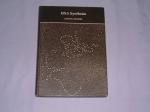|
This section contains 1,187 words (approx. 4 pages at 300 words per page) |

|
Life first appeared on Earth about 3.7 billion years ago in the form of unicellular organisms, i.e., single-cell organisms, termed prokaryotes. Bacteria and archaea are examples of ancient unicellular organisms that supposedly have evolved from a common primeval ancestral, through successive genetic variations, DNA recombination and gene divergence. Prokaryotes, (from the Greek, pro =before+ karya=nucleus) are therefore unicellular organisms without an organized nucleus separating chromosomes from the cytoplasm.
Archaea and bacteria were first considered as one sole species because of their similar anatomies. Recent genetic analysis, however, had established archaea as a species apart from bacteria. This analysis revealed that only 44% of archaea's genes are similar to those found either in bacteria or in unicellular eukaryotes known as yeast cells; and the remaining 56% are genes exclusive of archaea, completely different from those found in the other two...
|
This section contains 1,187 words (approx. 4 pages at 300 words per page) |

|


